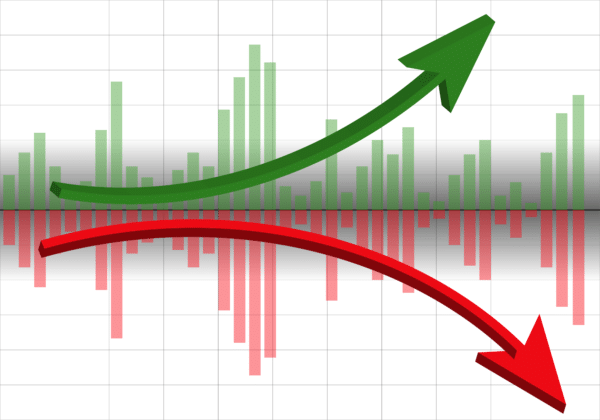702-660-7000
702-660-7000

It’s not uncommon to find a chart of historical index performance in an Indexed Universal Life Insurance (IUL) illustration. These tables often look impressive and present real, accurate numbers. They can also be incredibly misleading if you don’t fully understand how past index performance influences the potential cash value growth within an IUL policy.
While historical data can provide some context, it offers little real value when it comes to predicting the actual growth of your IUL policy. Here’s why.
Most IUL contracts rely on index values recorded at specific intervals—these can be daily, monthly, annually, or even every five years. The value of the selected index at the start of the period is compared to the value at the end of the same period to determine any gains. But here’s the catch: most policyholders don’t know which time period their policy uses. And that single detail has a massive impact on how (and whether) interest is credited to your cash value.
If the index rises over that contractual period, the policy credits a percentage of that gain to your accumulated cash value. For instance, if the index increases by 7% over the period, the insurer applies a percentage of that 7% to your cash value—but only at the end of the period. That means your policy doesn’t grow month-by-month like a traditional investment; it simply gets a lump sum added, assuming market conditions favor you.
What makes this even more complicated is that the way index gains are measured can vary from one policy to another. Some policies calculate gains as a simple change from the beginning to the end of the period. Others use monthly point-to-point, daily averaging, or other frequency models. Each method has its own strengths and weaknesses, and each one impacts the interest you’ll ultimately earn. If the index goes down, there’s no gain credited—just a fixed rate, usually 1% or less annually.
Even when gains are achieved, you don’t always receive the full benefit. That’s because of something called a participation rate. In some policies, this rate may be selected by the policyholder, but in many cases, it’s set by the insurance company. Participation rates can range anywhere from 0% to 100%. So if your participation rate is 40% and the index returns 7% during the measurement period, your policy would only receive credit for 2.8% (7% x 40%). On a $100,000 cash value, that would result in just $2,800 in interest for that year.
Further complicating the picture is how frequently interest is credited. According to industry sources, “IUL policies typically credit interest to your cash value either once a year or once every five years.”[i] That can make a world of difference. Annual crediting can enhance compound growth, while five-year average crediting can severely limit your gains. For example, the S&P 500 had an average 5-year return of -1.56% from March 2004 to March 2009. But if your IUL credited interest annually over those same years, the return might have been closer to +6.66%.
Timing is everything in IUL contracts—but unfortunately, it’s something no policyholder can control. A shift of just a few months in your policy’s start date can have a significant impact. The five-year period from March 2004 to March 2009 might yield a completely different return than the period from June 2004 to June 2009—even if the economy looked relatively similar. In the latter case, the average return would’ve dropped from 6.66% to just 4.47%.
This brings us to a hard truth: you can’t time the market—and neither can your insurance company. No one knows how the future will unfold. So relying on past performance charts is like trying to navigate using a map of last year’s weather.
Another limitation of IUL policies is that you only earn interest during upward movements in the market index. You don’t benefit from down markets. That might sound like a fair tradeoff until you realize that some of the biggest gains in market history have happened immediately after downturns. In fact, more than 50% of total market gains over the past 50 years occurred during just 10 of the most dramatic trading days. IUL owners, locked into rigid timing cycles and limited participation, are often unable to capitalize on these swings.
And then there’s the issue of internal costs. IUL policies come with increasing insurance charges as you age. The older you get, the more your policy costs—even if your health stays the same. That ongoing cost is a burden that falls squarely on you. And here’s the kicker: while you’re assuming all that risk, you don’t get to manage it. The insurance company structures the policy to control risk on their terms, not yours.
For those who thrive on risk, even they might be better off buying term life insurance and investing the difference in vehicles they can actively manage. Or, better yet, using Participating Whole Life Insurance (PWLIP) to build guaranteed cash values and combining that with sound investment strategies for long-term growth.
Why? Because the cost of missing out on the best market days is huge. “Since 1970, missing the best 25 trading days would have reduced the S&P 500 average return from 9.94% to just 5%.” [ii] That’s nearly half the return—wiped out simply by missing critical moments. Unfortunately, that’s exactly the risk many IUL policies expose you to due to their rigid timing and limited flexibility.
In the end, the complex structure of an IUL might appeal to those hoping to mix insurance protection with market-based growth—but history and logic both suggest you’re better off keeping the two separate. The complexity doesn’t translate to better outcomes. If anything, it increases your chances of disappointment.
So before you get swept up in slick illustrations and historical charts, ask yourself: do you really want to bet your financial future on a product where the odds—and the control—aren’t in your favor? For most people, the answer is clear. Choose simplicity, transparency, and guarantees. Leave the speculation to the stock market—not your life insurance policy.
 Tomas P. McFie DC PhD
Tomas P. McFie DC PhD
Tom McFie is the founder of McFie Insurance and co-host of the WealthTalks podcast which helps people keep more of the money they make, so they can have financial peace of mind. He has reviewed 1000s of whole life insurance policies and has practiced the Infinite Banking Concept for nearly 20 years, making him one of the foremost experts on achieving financial peace of mind. His latest book, A Biblical Guide to Personal Finance, can be purchased here.
[i]https://www.investopedia.com/articles/insurance/09/indexed-universal-life-insurance.asp
[ii] https://www.independenceadvisors.com/the-false-hope-of-market-timing/